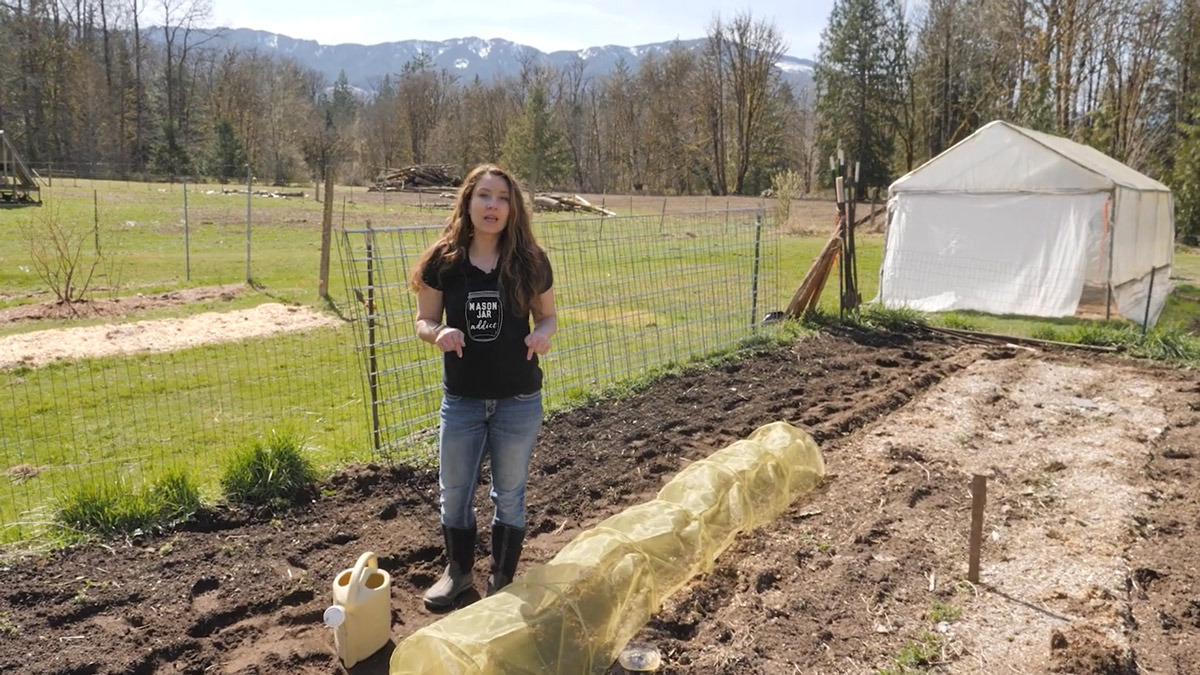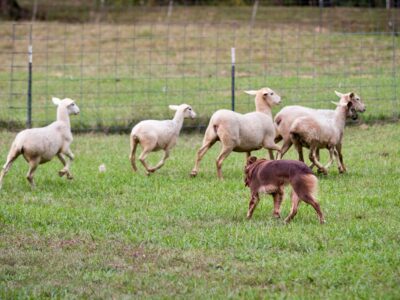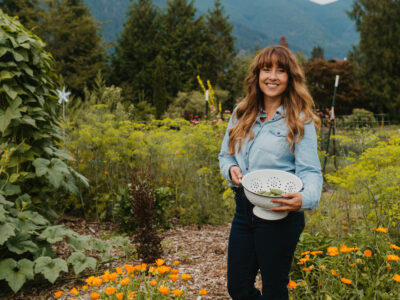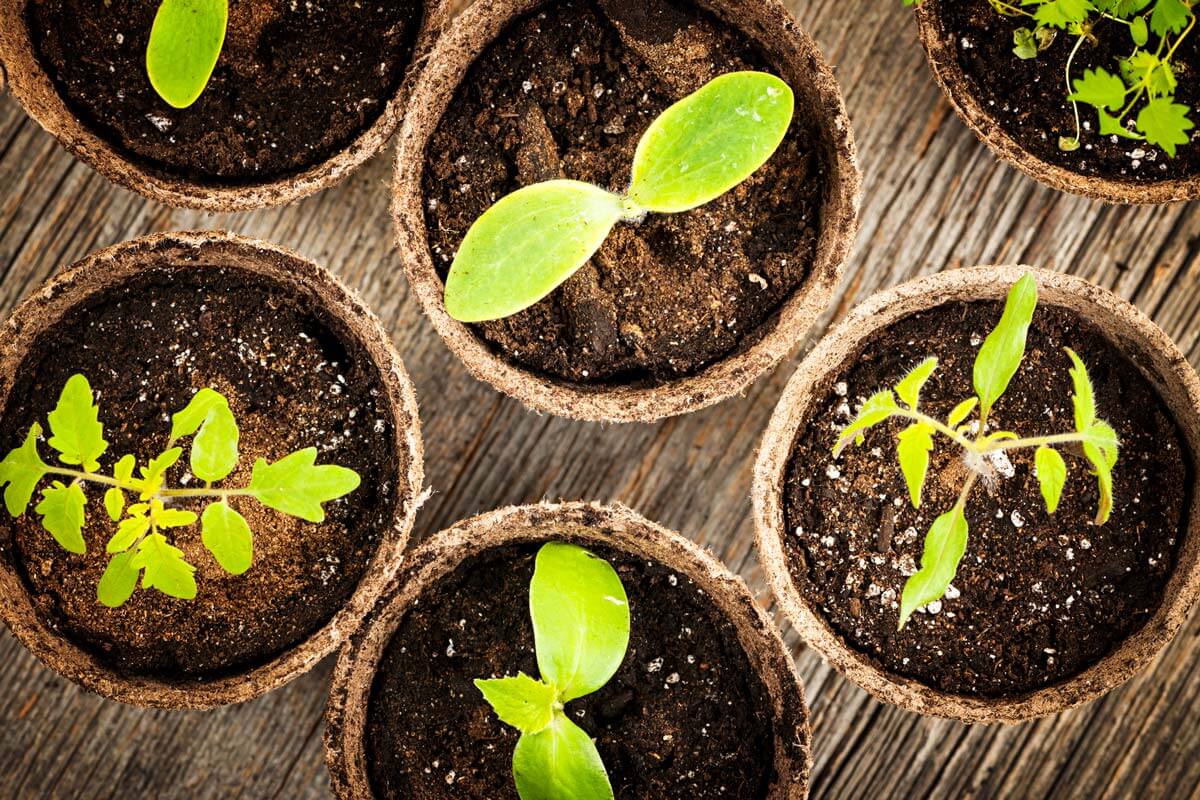Most often, people think of growing garden crops under cover is only for colder climates, but this method actually works for helping grow your garden in the heat of summer, too. Learn about the different methods for extending your growing season to all four seasons using covers.
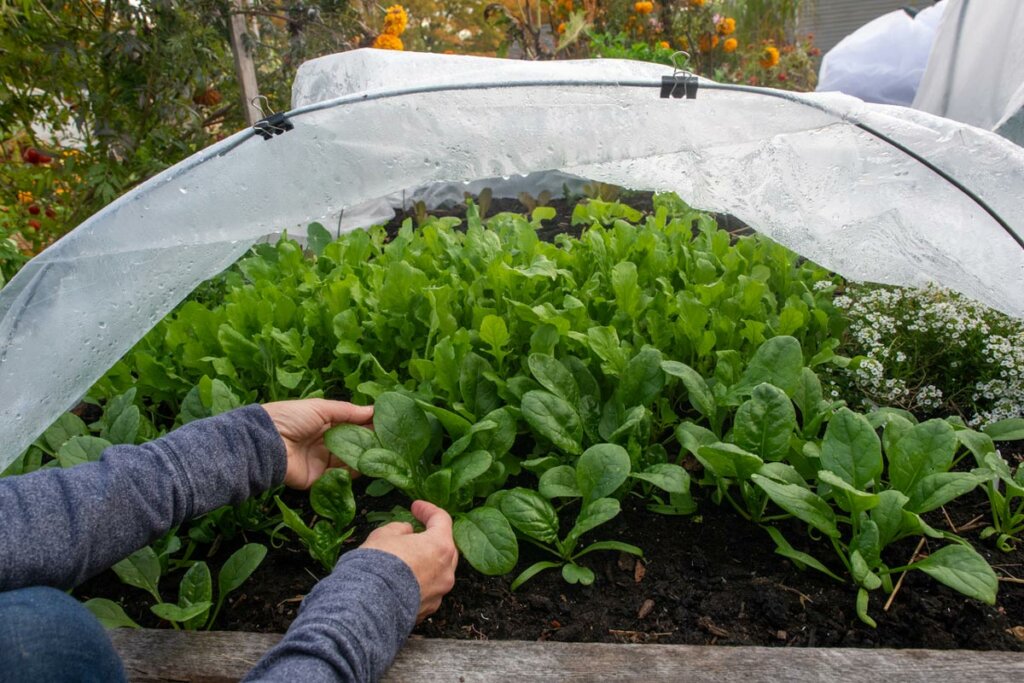
Niki Jabbour, living in Nova Scotia, Canada, has learned to grow year-round in her garden by utilizing row covers and other growing methods without using electric heat.
Table of Contents[Hide][Show]
Tips for Growing Year-Round
The most important things to remember when growing year-round is to know that it’s more about light than heat, and to think about the crops that grow best with the temperatures you’re dealing with.
For example, we’re not trying to grow tomatoes in the dead of winter, but we’re growing things like arugula, kale, carrots, beets, and scallions. Things that don’t mind the colder temperatures.

How to Grow Vegetables Year-Round
Knowing how to plan your growing year is important to make sure you start your crops at the right time of year to ensure you’ll get a harvest year-round.
Most people grow a summer garden that’s planted mid-spring. But you don’t want to plant your winter garden in the spring because everything will be overgrown before you’re ready to harvest it mid-winter.
Likewise, if you plant a garden in winter, the temperatures might be too low for anything to germinate, so you must plan accordingly and work with your temperatures to grow food year-round.
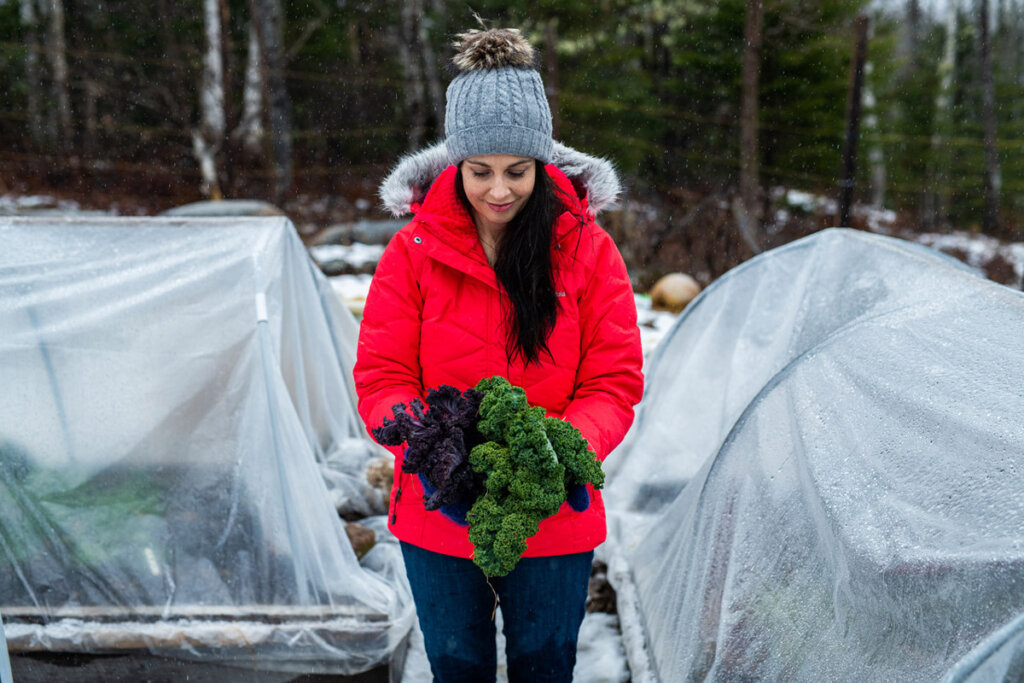
Late Fall & Early Winter Garden
If you’re planning for a late fall or early winter harvest, you’ll want to plant those crops from early August to late September. Once the crops have matured, heavily mulch them and harvest throughout the winter.
Knowing which crops to grow during each season is the key to success. Plan to grow crops that keep well in the ground such as carrots, turnips, parsnips, and beets.
Late Winter & Early Spring Garden
In October, when you have an empty garden bed or two, fill them with hearty seeds like spinach, kale, mizunas (mustard greens), and endive, let them germinate and start to grow, and then cover them with a mini-tunnel and forget about them.
In late winter/early spring, when the daylight hours begin to increase, those plants will come out of dormancy and put on a lot of growth for an early spring harvest.
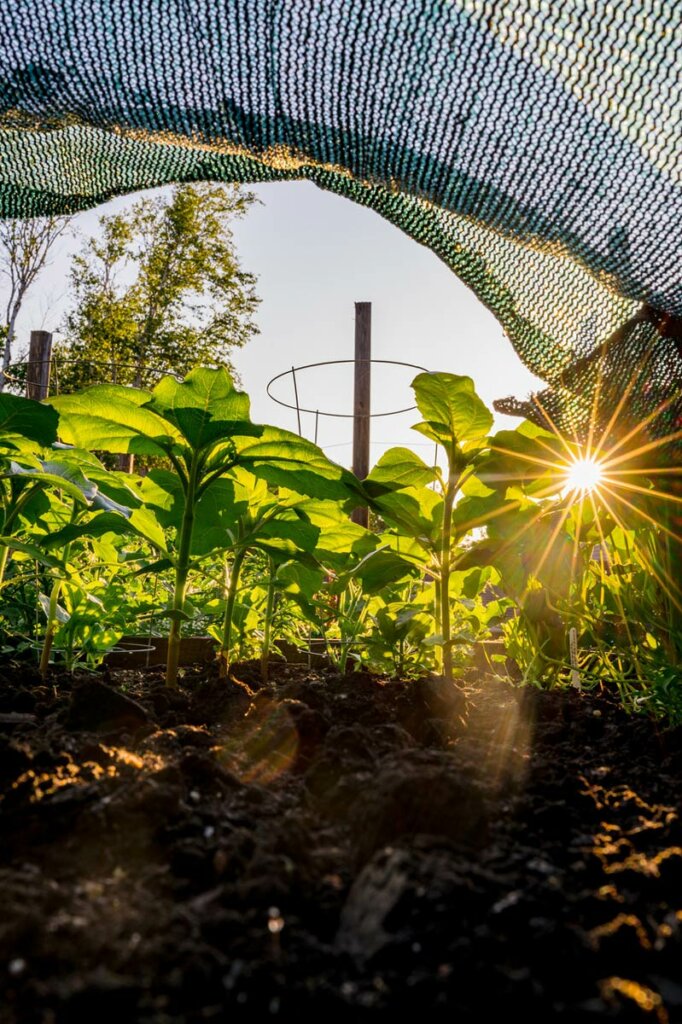
Summer Garden
Using shade cloth and creating structures to cool the ground down during the heat of the summer is also a great strategy to help grow more food.
Niki uses shade cloth when germinating crops in the summer to help keep watering down and allow the seeds to germinate in warmer temperatures than they’d typically like.
Shade cloth also helps protect plants from bolting too soon and changing the flavor profile of those crops (as once crops have bolted or are grown in too much heat, can get bitter).
It’s also a good idea to plan how you will preserve food when it’s too hot to can so you don’t lose your harvest during peak garden production.
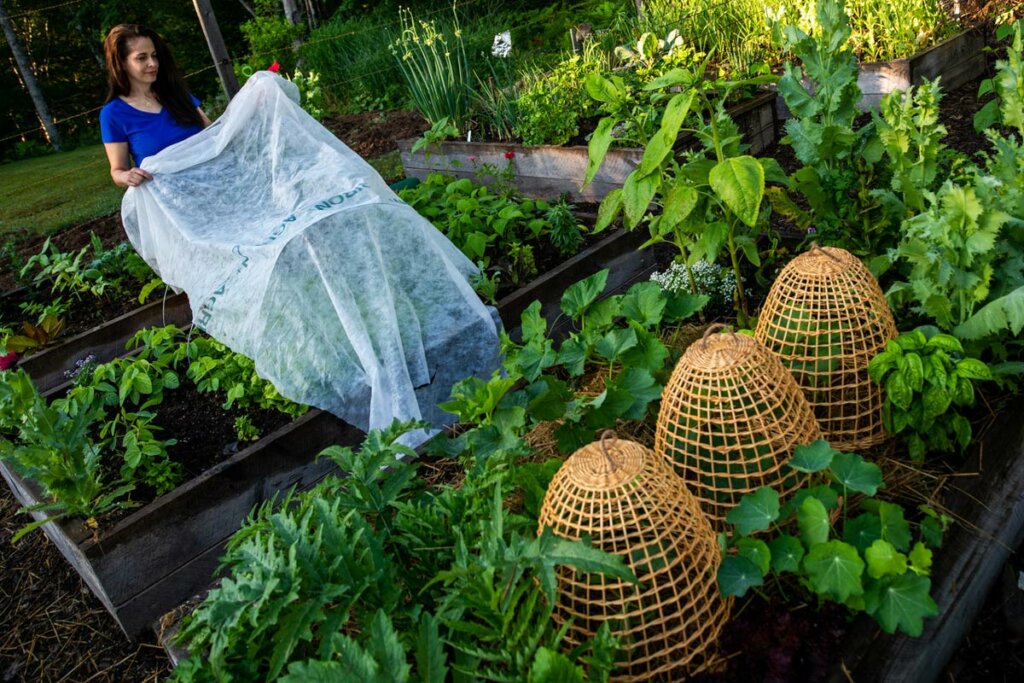
Types of Cold Frames
Cold-frames are such great for extending your growing season. They capture so much solar energy and are fantastic year-round food factories. There are many ways to go about creating a cold-frame, even without carpentry skills.
Straw Bale Cold Frames
Using straw bales as a cold frame is an easy way, without having to build something, to extend your growing season.
Surrounding kale or other veggies in the garden with bales of straw, then adding a covering (such as an old window frame, door or a piece of polycarbonate) will create a cold frame that will extend your harvest well into winter.
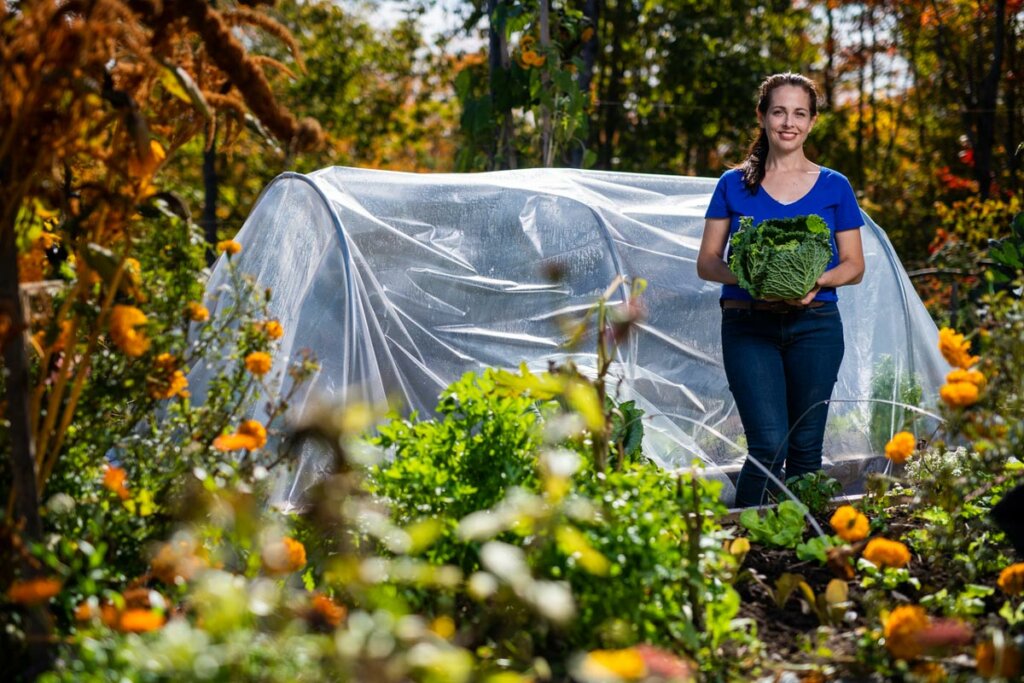
Lumber Cold Frames
Untreated hemlock (what Niki uses on the east coast) is very rot-resistant and makes great cold frames. In the Pacific Northwest, cedar is a better option. 2 inch thick boards are very insulating and the frames can be topped with a piece of polycarbonate.
If you’re super handy, you could even build your cold frame box (which sits over your crops on the ground, or on top of a raised bed) at an angle to capture maximum sunlight.
You can top the cold frames with old windows, but glass is easy to break and when it’s placed on a hard surface such as wood it’s just a more precarious covering to use.
Niki has a funny story of walking out to her garden and seeing deer standing on top of her cold frames! She was glad, at that moment, that she chose to use polycarbonate as it’s much more sturdy!
Polycarbonate Cold Frames
Though polycarbonate is the least insulating of all the materials listed, it is able to capture and let in more sunlight, especially when designed at an angle to maximize the sun’s angle during winter.
What I do to help increase insulation for my polycarbonate cold frames is to actually hill up dirt and leaves around the outside to allow for more heat retention.
Temperature Difference of Cold Frames
You may be curious just how big of a difference in temperature a cold frame can make for your crops. My own experience hasn’t been that great (about 5 degrees difference), however Niki has tested this with her cold frames and has noted the differences as well.
In addition to the warmer temperatures, the cold frames also protect the plants from wind, rain, snow and other inclimate weather, as well as keeping them about
- Straw Bales (with a polycarbonate top) – 8-10 degrees of protection.
- Lumber (with a polycarbonate top) – 6-8 degrees
- Polycarbonate frame – these are the least insulating (Niki doesn’t say how much heat these retain!)
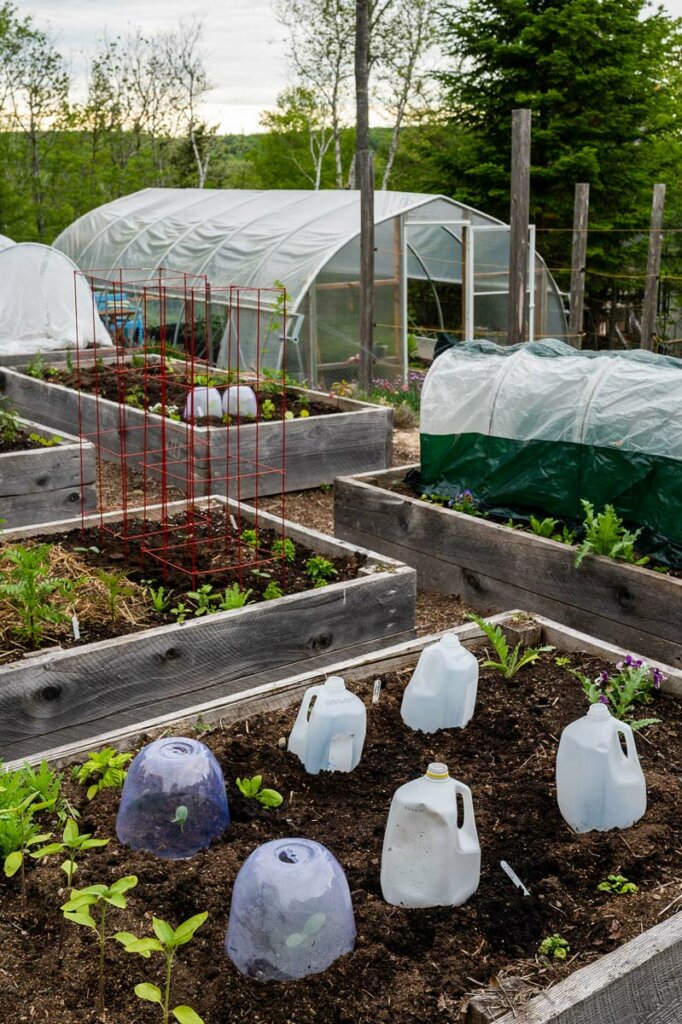
Types of Row Coverings
Garden covers are another fantastic way to extend the growing season, especially during the shoulder seasons when the threat of a hard frost is still around.
- High Tunnel
- Hoop House
- Row Covers
- Shade Fabrics
- Cloches
Using high tunnels, row covers, fabrics, and cloches are incredible for being able to plant earlier in the spring and keep crops out later in the fall/winter.
There are also fabric row covers that can be used during the heat of summer to offer a bit of sun protection for plants that don’t like as much heat.
Read this post for more info on different types of row covers.
Watering
Watering in the winter isn’t usually needed, especially in the northern climates where Niki and myself live. Because, once winter hits, the plants aren’t transpiring and don’t need the water.
This is almost like a vacation for gardeners because we don’t have to do all the work, but we’re still reaping the rewards of gardening all winter long.
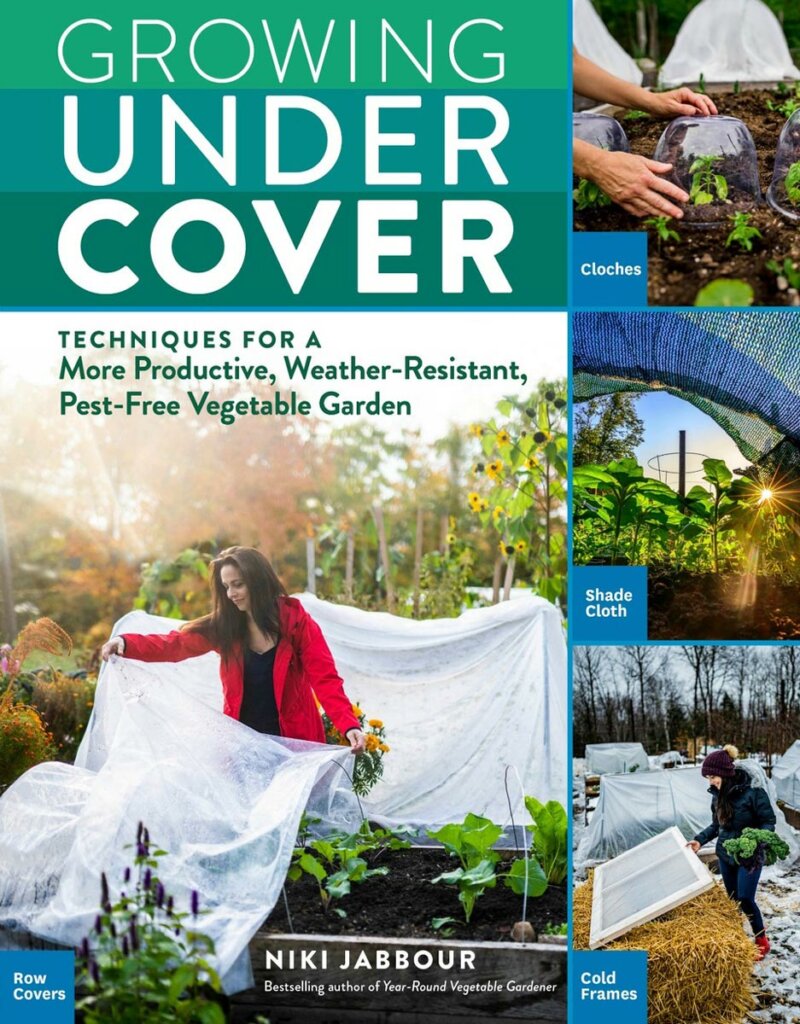
Niki’s Recommendations
Niki goes into much more detail about growing year-round in her new book, “Growing Under Cover: Techniques for a More Productive, Weather-Resistant, Pest-Free Vegetable Garden“, so be sure to snag her book, too!
When choosing garden covers, she always says think about your climate and your growing season and know how you want to improve it. If you’re just growing a summer garden, you probably don’t need a large structure like a greenhouse. (That is a common gardening myth.) A pop-up poly-tunnel could get the job done.
However, if you’re going to be growing winter gardens, look into Gardener’s Supply, Johnny’s Seeds (especially for a metal bender!).
- Accordion row covers
- 6-mil greenhouse poly
- Greenhouse
- Poly-tunnels
- Cloches
- Mesh row covers
- Frost row covers
- Schnop (?) Clamps
Related Links:
- Visit Niki at her website Savvy Gardening
- On Instagram @savvygardening or @nikijabbour
- On Facebook
- And grab Niki’s book “Growing Under Cover” here
More Articles for Gardening Success:
- Beginner Gardening Secrets You Need to Know
- 13 Basic Steps to Starting a Vegetable Garden
- The Ultimate Seed Starting Guide
- Best Way to Germinate Seeds – How to Germinate Seeds Faster
- What Are the Best Seed Starting Containers
- Potting Up Seedlings & How to Separate Seedlings
- Direct Sow Your Garden Seed
[fusebox_transcript]
